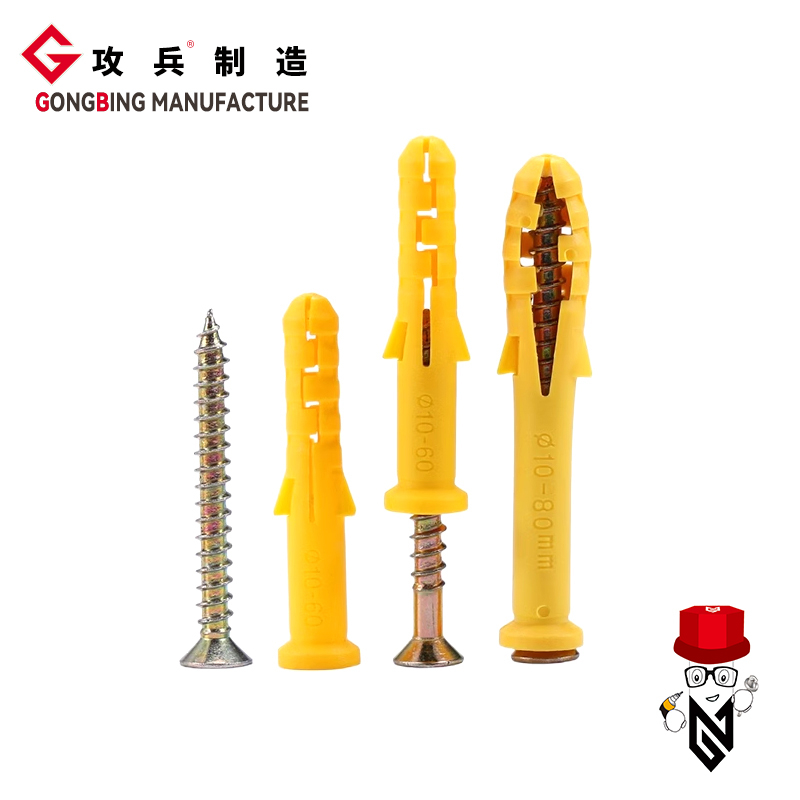Innovative Self-Drilling Anchor Bolts for Enhanced Construction Stability and Efficiency
The Importance of Self-Drilling Anchor Bolts in Modern Construction
In the realm of construction and civil engineering, the stability and reliability of structures are paramount. As engineers strive to ensure the robustness of foundations and retaining walls, one innovative solution that has gained remarkable importance is the self-drilling anchor bolt. These specialized fasteners are designed not only to secure structures but also to simplify the drilling process, making them a preferred choice in various applications.
What is a Self-Drilling Anchor Bolt?
Self-drilling anchor bolts are a type of tie-back or ground anchor that is engineered to drill into the ground while simultaneously providing anchorage for construction projects. Unlike traditional anchor bolts, which require separate drilling and installation processes, self-drilling anchor bolts integrate both drilling and anchoring into one seamless operation. This is achieved through a unique design that allows the bolt to penetrate and create its own hole as it is being installed.
The construction of these bolts typically involves a hollow steel shaft equipped with a helix or a pointed end, which enables it to cut through soil and rock. Moreover, they are often coupled with a high-strength grout, allowing for durability and resistance to various environmental conditions.
Advantages of Self-Drilling Anchor Bolts
The use of self-drilling anchor bolts in construction offers numerous advantages. First and foremost, they significantly reduce the time and labor required for installation. Traditional anchoring systems often necessitate extensive drilling, but with self-drilling bolts, the process is streamlined, leading to increased productivity on job sites. This efficiency is particularly beneficial in projects where time is of the essence, such as emergency repairs or rapid construction deadlines.
self drilling anchor bolt

Additionally, self-drilling anchor bolts provide enhanced reliability. Their design allows for effective load distribution and increased holding capacity, which in turn contributes to the overall stability of structures. In areas susceptible to seismic activity or soil movement, these bolts can offer additional security, minimizing the risk of structural failure.
Another noteworthy advantage is the versatility of self-drilling anchor bolts. They can be employed in a variety of soil conditions, from soft clay to dense rock. This adaptability makes them suitable for diverse applications, including bridge construction, slope stabilization, earth retention, and even underpinning existing structures.
Applications of Self-Drilling Anchor Bolts
Self-drilling anchor bolts are utilized in a wide array of construction projects. In transportation infrastructure, they are integral in securing bridges and tunnels, as they provide the necessary support under heavy loads. In geotechnical engineering, these bolts are often used for slope stabilization and ground improvement. By anchoring soil to rock or reinforcing weak ground, engineers can mitigate the effects of erosion and landslides.
Furthermore, in urban construction, self-drilling anchor bolts serve as critical components in building foundations, especially in regions with complicated soil profiles. They help in anchoring retaining walls and underpinning, ensuring that structures remain safe and stable over time.
Conclusion
As the construction industry continues to evolve, the demand for innovative and efficient solutions remains strong. Self-drilling anchor bolts exemplify this trend, offering a combination of reliability, efficiency, and versatility. Their ability to simplify installation while providing essential support makes them an indispensable tool for engineers and builders alike. As we look toward the future of construction, self-drilling anchor bolts will undoubtedly play a vital role in shaping safer and more resilient infrastructures. The integration of such technologies not only enhances construction practices but also contributes to the longevity and safety of the structures which serve as the backbone of our communities.
-
Weatherproof Plastic Expansion Anchors for OutdoorNewsJun.06,2025
-
Sustainability in the Supply Chain: Eco-Friendly TEK Screws ProductionNewsJun.06,2025
-
Load-Bearing Capacity of External Insulation FixingsNewsJun.06,2025
-
Double Head Bolts: Enhancing Efficiency in Industrial MachineryNewsJun.06,2025
-
Corrosion Resistance in Chipboard Screws: Coatings for Wholesale DurabilityNewsJun.06,2025
-
Butterfly Toggle Bolts : Enhancing Structural ResilienceNewsJun.06,2025
